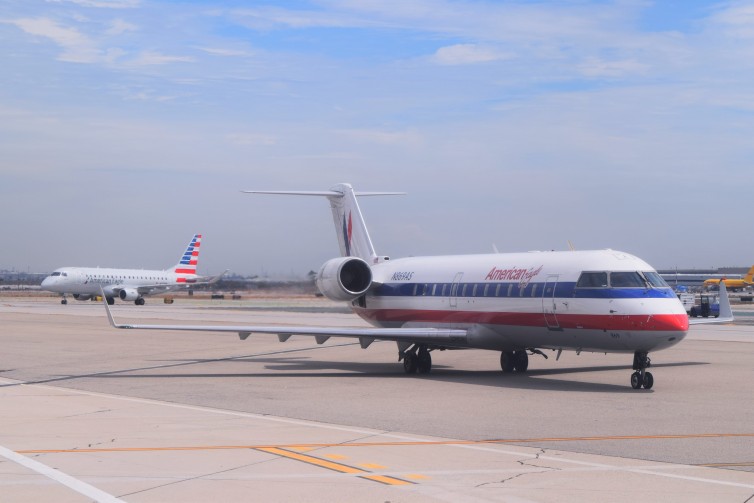
An American Eagle CRJ200 taxiing at LAX, with an Embraer 175 following – Photo: John Nguyen | AirlineReporter
Let’s face it… the 50-seat Bombardier CRJ200 isn’t very popular. At all. You’ll find countless articles and blogs about how much flyers dread flying in it, and how all-around terrible the experience was. Complaints were numerous: claustrophobic cabin, tiny overhead bins that fit only the smallest of carry-on bags, no first class, inoperable lavatories, and so on. This wasn’t limited to just one airline either; CR2s are found in the regional fleets for most of the major U.S. airlines. Coincidentally, many of them are operated under contract by the same regional carrier, SkyWest Airlines.
Does the CR2 deserve its bum rap? Maybe, maybe not (but probably). For some passengers, however, there is hope just over the horizon…
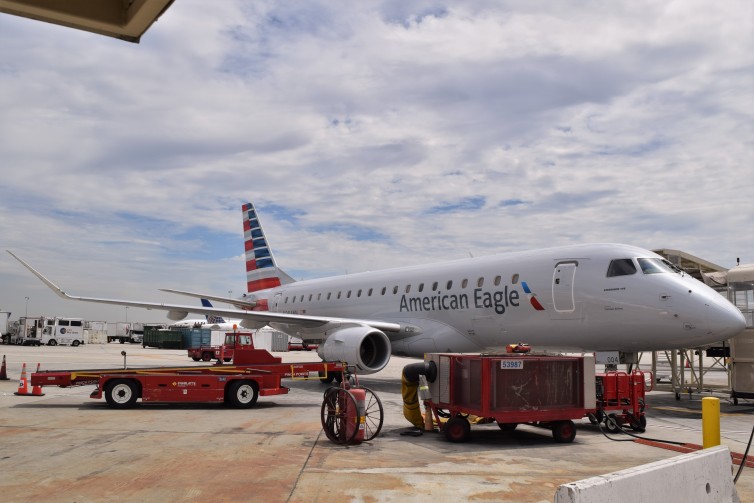
A Compass Airlines E-175, operated for American Eagle, being prepped for departure at LAX – Photo: John Nguyen | AirlineReporter
As I mentioned in my recent CRJ200 flight review story, and to the joy of many flyers on American Eagle, American Airlines’ regional brand, CR2 service will be dramatically downsized out of Los Angeles International Airport (LAX), and many former CR2 routes will be taken over by Compass Airlines flying the highly-praised Embraer ERJ-175 (E-175), a much larger and more modern aircraft that can seat 76 total passengers in first and economy.
I reached out to American, and a company representative confirmed the transition to focus on more E-175 service in Los Angeles, adding that while CR2s are being shifted away from LAX, some flyers may still see it on a few routes. October 5th was the cutover date for the E-175s to replace the bulk of CR2 flights.
The SkyWest Contracts
To complicate things, there are actually two SkyWest contracts at play, one with American and the other with US Airways. Both carriers are set to complete their operational merger on October 17, continuing on as American Airlines, with the US Airways brand riding off into the sunset.
The contract with US Airways calls for four CRJ900s (CR9s) and 10 CR2s. This is notable because the CR9s, while offering first and economy seats, do not offer American’s “Main Cabin Extra” with more legroom in coach (save the exit row seats), making for an unpleasant surprise for some frequent flyers hoping to stretch out. This contract will expire under the combined carrier, though the date will be closer to the end of the year, and not in October as previously reported from other sources.
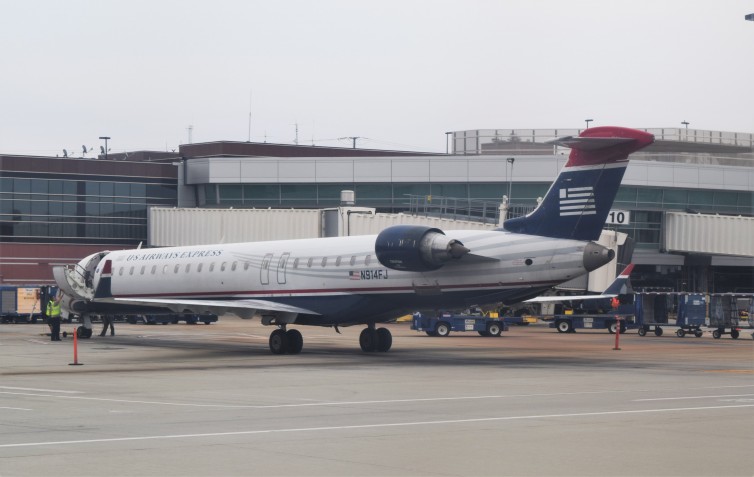
A US Airways CRJ900 at an overcast San Jose Airport – Photo: John Nguyen | AirlineReporter
The contract with American is still valid and in effect, and calls for 12 CR2s to be operated for American Eagle. The planes currently based at LAX will soon shift to Phoenix. These aircraft will still be routed to LAX and possibly flown onward to other small markets, so the CR2s will still have a limited presence out of LAX.
History in Brief
The CR2s were originally meant to join the American Eagle fleet as a stopgap measure. Airlines were (and are currently) favoring larger regional jets to boost per-seat revenue and lower cost, so they were returning the smaller ones back to their owners or lessors, or just scrapping them, as fast as they could.
American had already announced adding the E-175s to the fleet, however the new planes didn’t come from the factory fast enough to replace the Embraer 135/140/145 series jets being retired.
Enter SkyWest, who just happened to have a bunch of CR2s returned to them from Delta Air Lines. American needed planes, and SkyWest had them. In 2012, the two airlines agreed to a contract that pressed the CR2s into service, filling in for retired regional jets at LAX until more E-175s came online.
What’s good about the CRJ200?
In short, not much. The CR2 does its mission adequately, enabling service to small towns and cities that wouldn’t be able to support much larger aircraft. In that context, it’s less about passenger comfort, and more about the passenger having air service at all.
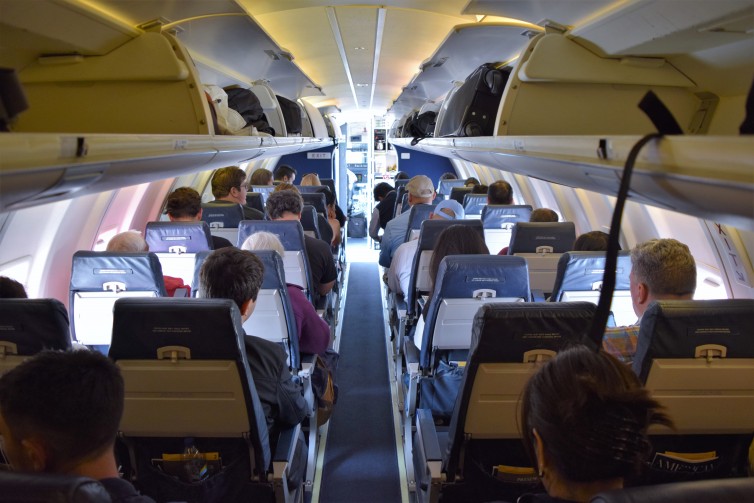
The cabin of an American Eagle CRJ-200 – Photo: John Nguyen | AirlineReporter
Among the plane’s saving graces were its small size and range, meaning that a passenger could board and alight quickly, and it can’t fly too far so you won’t have to spend too much time on it.
The bigger problem, for the passenger experience, was that the CR2s were being used on routes between major cities where the American’s competition was using much larger aircraft. Some examples in the table below:
Sample Nonstop Route/Aircraft Used
Destination sorted by populationAmerican Delta Southwest United Los Angeles-San Diego CRJ200 x 8 E-175 x 4
CRJ900 x 1– E-175 x 4
CRJ200 x 2Los Angeles-San Jose E-175 x 1
CRJ200 x 5E-175 x 4
717 x 4737 x 11 – Los Angeles-Sacramento CRJ200 x 5 E-175 x 1
CRJ900 x 4737 x 9 CRJ700 x 2
CRJ200 x 1Los Angeles-Salt Lake City CRJ200 x 3 757 x 2
737 x 4
319 x 1737 x 3 E-175 x 2 Data taken on September 9, 2015 for flights on Sepember 17 – Data: ITASoftware
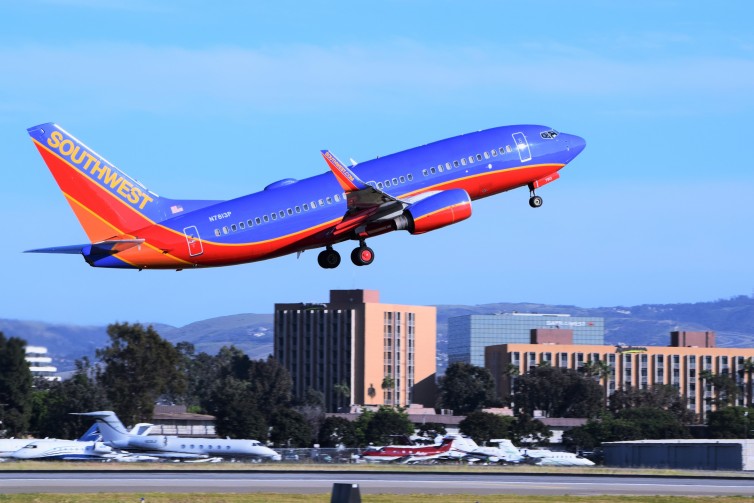
A Southwest 737 departing John Wayne Airport. Southwest is the dominant carrier for intra-California flights. – Photo: John Nguyen | AirlineReporter
So what makes the Embraer E-175 better?
Here’s a handy chart to make the comparison a little easier:
Feature or Amenity CRJ200 E-175 First class cabin 🙁 ✔
12 seatsMain Cabin Extra 🙁
4 exit row seats✔
20 seatsFull-size overhead bins 🙁 ✔ Inflight Wi-Fi 🙁 ✔ Lavatories 🙁
1 – usually non functioning✔
2 standardLeather seats 🙁 ✔ Adjustable headrests 🙁 ✔ New plane smell 🙁 ✔ Cabin height 🙁
6′ 1″6′ 7″ Cabin width (seating configuration) 🙁
8′ 4″ (2-2)9′ 0″ (1-2 in first, 2-2 in economy)
It’s readily apparent that the E-175 is superior in almost all measures versus the CRJ-200, and is generally a hit with passengers, many of whom probably don’t even realize that they’re on a regional jet and not mainline equipment.
Here is the sample schedule after the change:
Sample Nonstop Route/Aircraft Used
Destination sorted by populationAmerican Delta Southwest United Los Angeles-San Diego CRJ200 x 8
E-175 x 6E-175 x 4
CRJ900 x 1– E-175 x 5
CRJ700 x 1Los Angeles-San Jose CRJ200 x 5
E-175 x 5E-175 x 4
717 x 4737 x 11 – Los Angeles-Sacramento CRJ200 x 53
E-175 x 2E-175 x 1
CRJ900 x 4737 x 9 CRJ700 x 2
CRJ200 x 1Los Angeles-Salt Lake City CRJ200 x 3 757 x 1
737 x 5
320 x 1737 x 3 CRJ700 x 1
CRJ200 x 1Data taken on September 29, 2015 for flights on October 5. – Data: ITASoftware
In this sampling, the trunk routes to San Diego and San Jose go completely E-175. LAX-Sacramento is a moderate route, and two of the CR2 flights are replaced with E-175s. The surprise is the LAX-Salt Lake City sector, which remains all-CR2; one option for AA customers on this route is to fly AAdvantage partner Alaska Airlines’ single daily flight on a 737.
American was kind enough to give us a first look at their photos from a shoot at LAX, highlighting the E-175. (For all you #AVGeeks, the photos are of N207AN, MSN 17000490 powered by GE CF34-8 engines, delivered 06JUL2015).
- Check out the fancy glass cockpit onboard an American Eagle E-175 at LAX – Photo: American Airlines
- Forward galley, flight deck entrance, and lavatory onboard an American Eagle E-175 at LAX – Photo: American Airlines
- Aft galley and lavatory onboard an American Eagle E-175 at LAX – Photo: American Airlines
The first class section has 12 seats, arranged 1-2 in four rows. The “A” side is great for single travelers who prefer privacy, with the bonus of having both an aisle and a window seat. The bins on the C/D side of first are large enough to fit a standard rollaboard wheels-first, while the A-side bins can hold small personal items.
- First class section on board an American Eagle E-175 at LAX – Photo: American Airlines
- First class seats on board an American Eagle E-175 at LAX – Photo: American Airlines
- A clever pull-out tray in first class on an American Eagle E-175. Photo: American Airlines
Econony has 64 seats total, split into 20 seats of Main Cabin Extra and 44 standard legroom seats. The bins here can still fit a standard rollaboard, but sideways. For the extremely long-legged, Seat 5B offers unlimited legroom, being directly behind the path shift from first class to main cabin; be weary of passers-by kicking your feet. In fact, all of Row 5 offers more legroom, since only a curtain separates the cabins.
- The main cabin on board an American Eagle E-175 at LAX – Photo: American Airlines
- American Eagle E-175s feature Main Cabin Extra seating – Photo: American Airlines
- Economy seats on board an American Eagle E-175 at LAX – Photo: American Airlines
- Arguably, the best econony seat on an AA E-175 for legroom is 5B, directly behind the first class aisle – Photo: American Airlines
- Larger bins on board the E-175 can hold standard roll aboard suitcases – Photo: American Airlines
- The overhead passenger service unit on an American Eagle E-175. All hail the air vents! – Photo: American Airlines
American has invested heavily on elevating the passenger experience. While there is a focus on their long-haul offerings, substantial efforts have been made to improve regional flying as well, with firm orders of 60 E-175s for AA, along with options for 90 more. New E-175s have been delivered at a rate of one-two per month, and Compass is expecting their last aircraft to be delivered mid-December of this year. Starting early next year, Envoy will begin receiving the first of 40 E-175s earmarked for its operation out of Dallas/Forth Worth.
At LAX, most passengers who choose American can soon look forward to their intra-state flights, instead of dreading them.
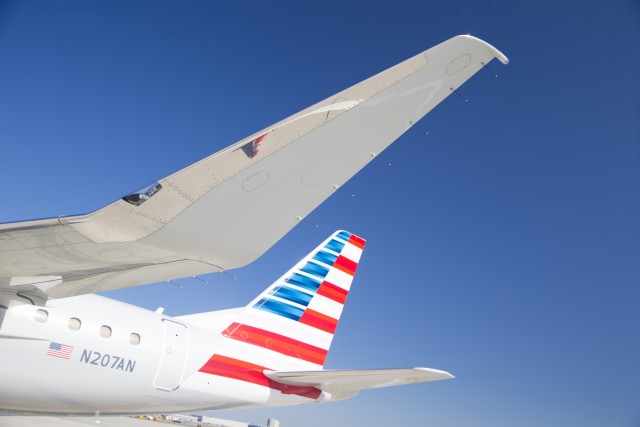
An Embraer E-175 at LAX – Photo: American Airlines
Comments are closed here.
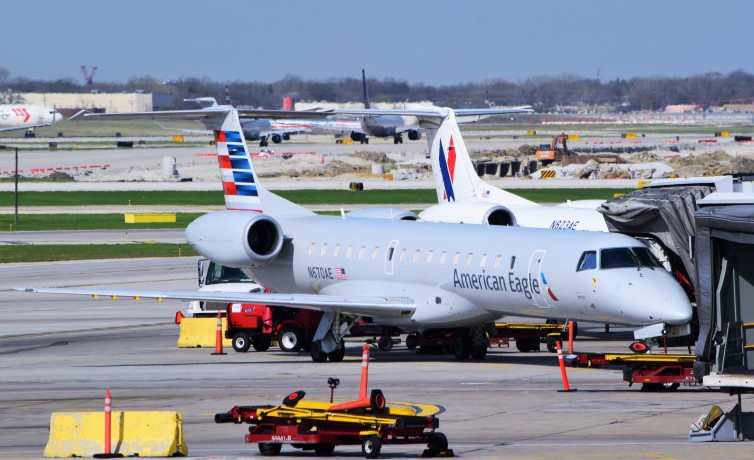
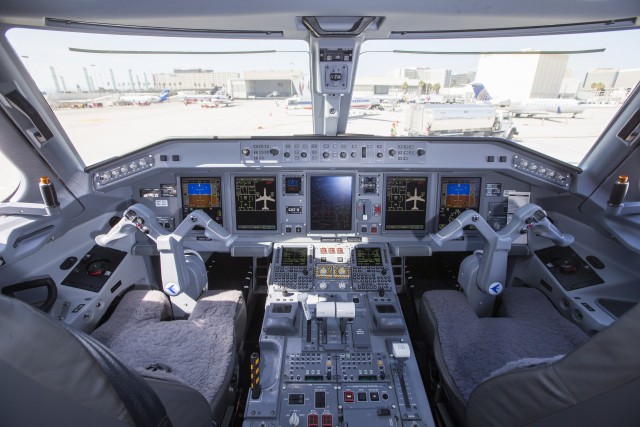
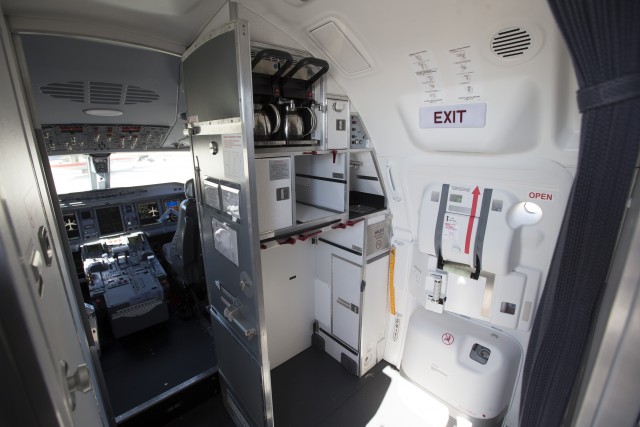
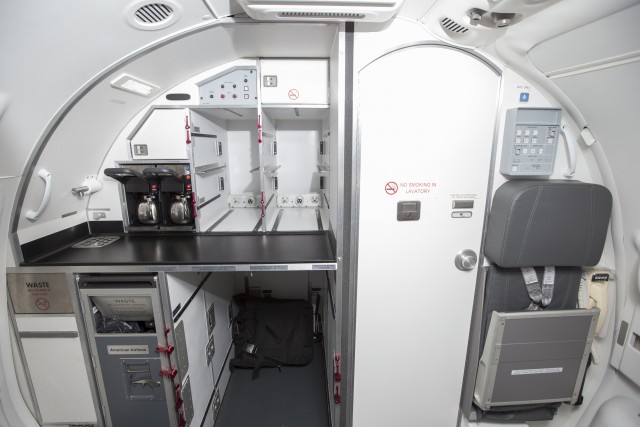
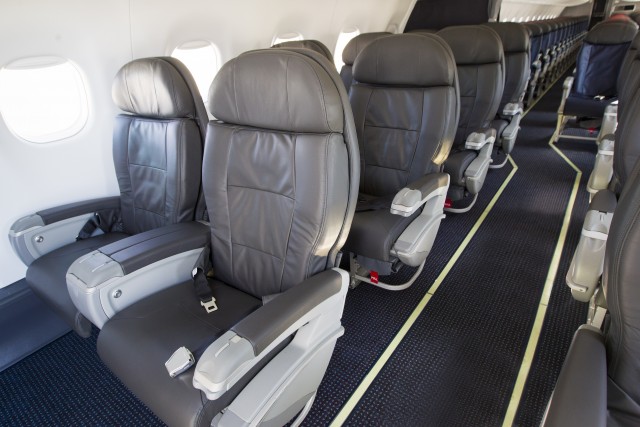
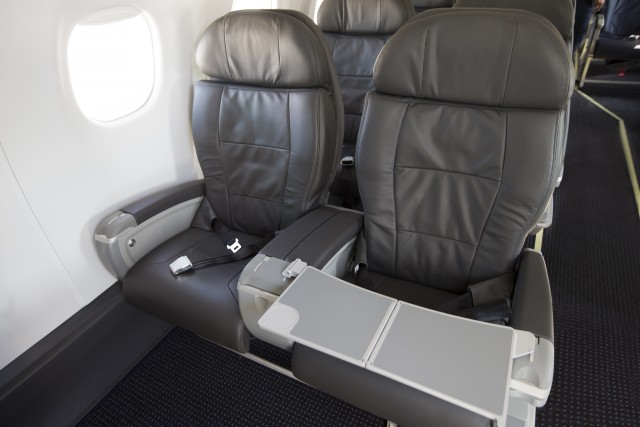
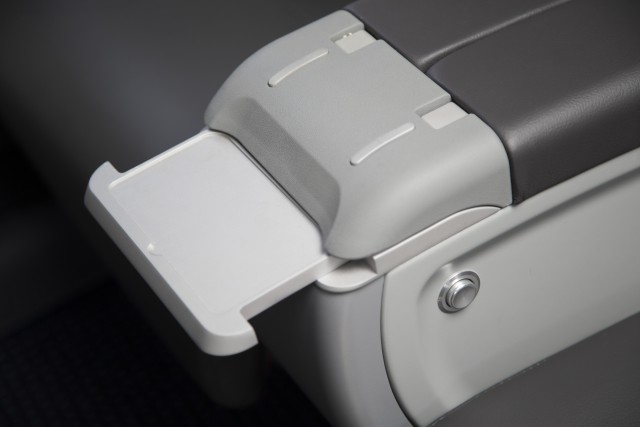
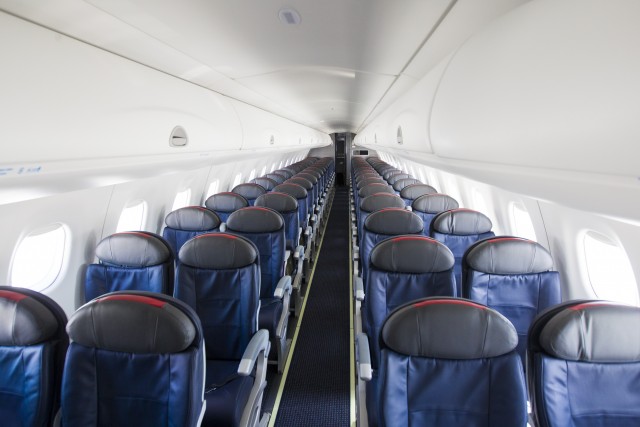
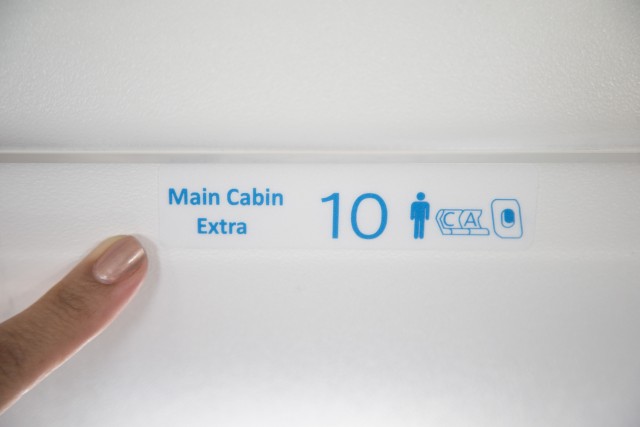
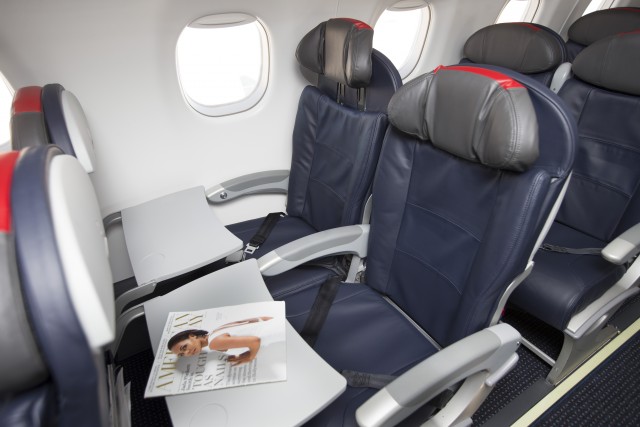
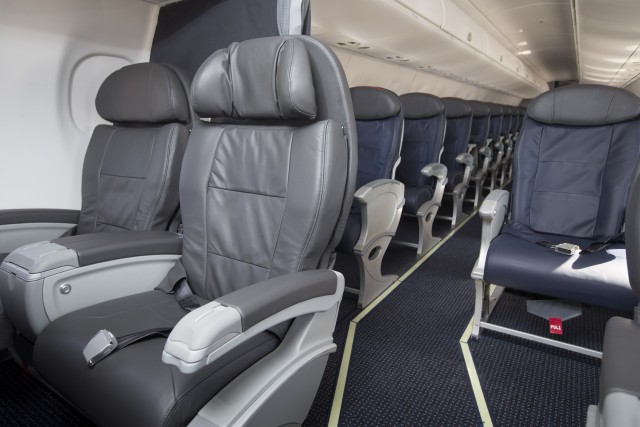
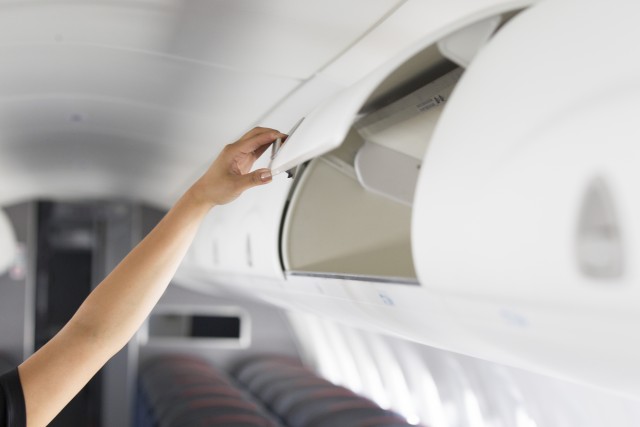
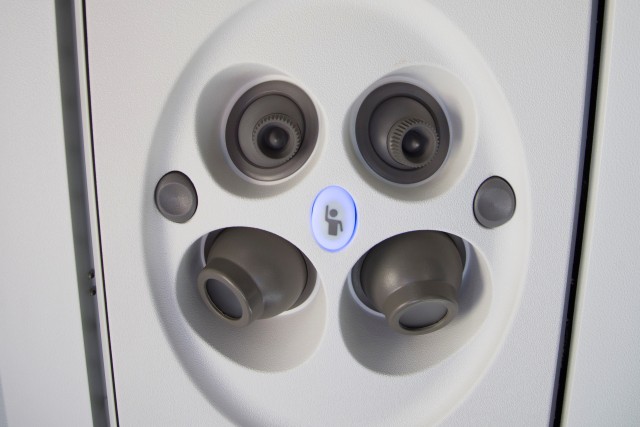
The CRJ-200 may not be perfect, but I don’t think it’s fair for you to be taking so many pot shots at it. The CRJ-200 is a generation behind the ERJ family and it is hardly a fair comparison to the CRJ. The CRJ created the RJ market…its also a Canadian invention and that is something that I am proud of…regardless of its failures.
@Peter, no doubt the CRJ-200 has it’s place in history for helping to carve out the RJ segment. Unfortunately, time and more modern technology has passed it by, yet the carriers continue to use it. when it comes to the passenger experience, it must be compared to its competition.
I was pleasantly surprised to see the new E-175’s out of Fresno to LAX. I don’t travel much, 3 or 4 times a year for business, partly because the prior service out of Fresno was so bad. I would regularly choose to fly out of Sacramento or SJ to get 737 service to out of state destinations. Now I may be requesting my boss to schedule me for additional travel in the future just to experience these aircraft again! The flight time from Fresno to LAX was an amazing 34-39 minutes and incredibly comfortable! I was wondering if the Bombardier C-Series is gaining any traction in the west coast RJ market, or any other domestic locations? The C-Series looks like a game changer to the RJ market as is the E-175 in my opinion.
I once had to fly DEN-SJC on a CR2. It was 948 miles and 2h39m of pain. Good riddance!
Air Wisconsin flies hundreds of these out of F terminal in Philly. I call this thing the torture tube. Terrible plane. I once flew on it from PHL to MCI.
fair and objective story, I guess, but what a waste of words. No one likes the CRJ200, for all of the cited reasons and many more. It cannot depart the regional carrier’s fleet(s) soon enough. Another way to describe that little ‘thing,’ is to call it an genuine insult to passengers and an even greater insult to the pilots who are forced to fly it. Sell the entire fleet to some Third World country, but be done with it here.
Geography dictates that I originate from a small airport and eventually return there. I’d rather wait for a later flight, perhaps with a long connection time, than to fly on this imitation of a ‘Transport’ airplane, even for the 35-45 minute connector always necessary. With a good pilot, I’m sure that it is safe, but this is 2015; not early 1946. A DC-3 can be made more comfortable…
They cannot depart the branded fleets soon enough, contracts be damned. -C.
Flight on CRJ 200 SkyWest 4667 had more room than Delta 767 400 ER on flight from London to Atlanta. Nine hours of economy coach!
Haha very funny, if only it had the operational range.
you dumb ass, he meant as a comparison. Not that he flew it the CRJ Internationally. By gthe way as a flight attendant and passenger CRJ is much more better than Embraer
I have flow CR2’s numerous times CHA-ATL, and a few times times CHA-CVG (back in the day). Yes, a CR7, CR9, or E175 is nicer plane, experience wise. Thankfully, traffic now permits larger aircraft on CHA-ATL, sometimes even a MD-8x or B717. But for short hops, a CR2 was tolerable, IMHO. OTOH, I’ve done CHA-ORD and CHA-DFW on American Eagle E145’s in years past. Cramped and painful on the tush! Worse than a CR2, according to my backside. 🙂
@Fred – No doubt, claustrophobia would set in after the first hour on an ERJ-135/140/145! They were ever-present on AA’s West Coast routes. I felt really sorry for the Walmart employees (who were all required to travel in economy, even executives) who had to take the old LIT-LAX flight non-stop in a 145.
John | AirlineReporter
The ERJ-135/140/145 series were the worst possible planes to fly on, in comparison the CJ200 is far superior, as are the CJR700 & CJR900. The CRJ200 continues to serve a niche market at the lower end of what most people will tolerate and I for one will gladly take that very comfortable flight, like so many others I have in the past. I do like the E175 but your comparison might as well be to to a new A321 or 787, just wishful thinking. I will take the remote location or increased frequency any day over the bigger, newer wiz bang plane.
What are your thoughts on the tiny Embraer EMB 120 Brasilia?
@JohnPaul – I have a soft spot for the EMB-120 as well as the Saab 340b. Definitely on the lower end of modernity, but flying them numerous times between LAX and SAN. At around 8,000ft, they had great views of the coastline. That said, I wouldn’t take either more than 1.5 hours, if I can help it.
John | AirlineReporter
I find it funny how people complain about CR2’s. I remember when they were the new fad and a big upgrade from turboprops, and people were just happy to be flying in a jet! I never found them to be that comfortable, but better than a prop job. Then you had mainline pilots that were afraid these regional airlines would undermine their job security with these small jets and negotiated restrictions into their contracts, fears that were never realized. But the airlines over utilized them, no doubt. Good riddence
I fly the CRJ-200 for a living, and must say it’s good a plane to fly from a ‘pilot’s perspective’. But from a passengers perspective, I totally agree with everything said here, and I too dread the occasion when I have to ride in the back to connect to a working flight. Why the big-3 still keep these planes around I’m sure. But the first major airline to totally rid their fleet of these aircraft should pride them selves on this fact in the form of a marketing campaign, letting the public know they are the first airline to be completely done with the dreaded 50 seat Barbie jet.
@Ken, thanks for your perspective! It’s too bad that the sub-50 seat market has such a low margin. The reality is that the airlines would probably rather end service to a small airport rather than throw even an E170 on it. There’s still a place for the small planes, but it’s probably time to modernize… it’s just that some company will have to take up that cause.
John | AirlineReporter
Well. It’s oct 23 and I’m flying San Diego to LAX on United and I’m on a dreaded crj-200. They haven’t gone away completely.
@WMVP – The focus of this piece was on AA who was ridding of the CR2s, but my schedule search did show UA not to have their CR2s on the schedule. Looking at the schedule now over the next couple of days, a CR2 did manage to sneak in on the 4:09pm departure from LAX, and on the 5:33pm departure from SAN.
John | AirlineReporter
it is hard to compare an old first generation plane that created the concept of the regional jet to a newer one, but national (Canadian) pride aside the ERJ is a pleasant experience, and the ERJ will only improve that. Heck, I prefer the dash 8 q400 over the CRJ’s!
@Todd – For a short(er) flight, I find the Q400s to be pleasant! The only drawback is the lack of F seats, but other than that, I do find them to be more comfortable than even the CR7s.
The E-series have definitely set the new standard. I haven’t been on an SSJ yet but would to be soon. And I look forward to seeing the CSeries and MRJ in action soon!
John | AirlineReporter